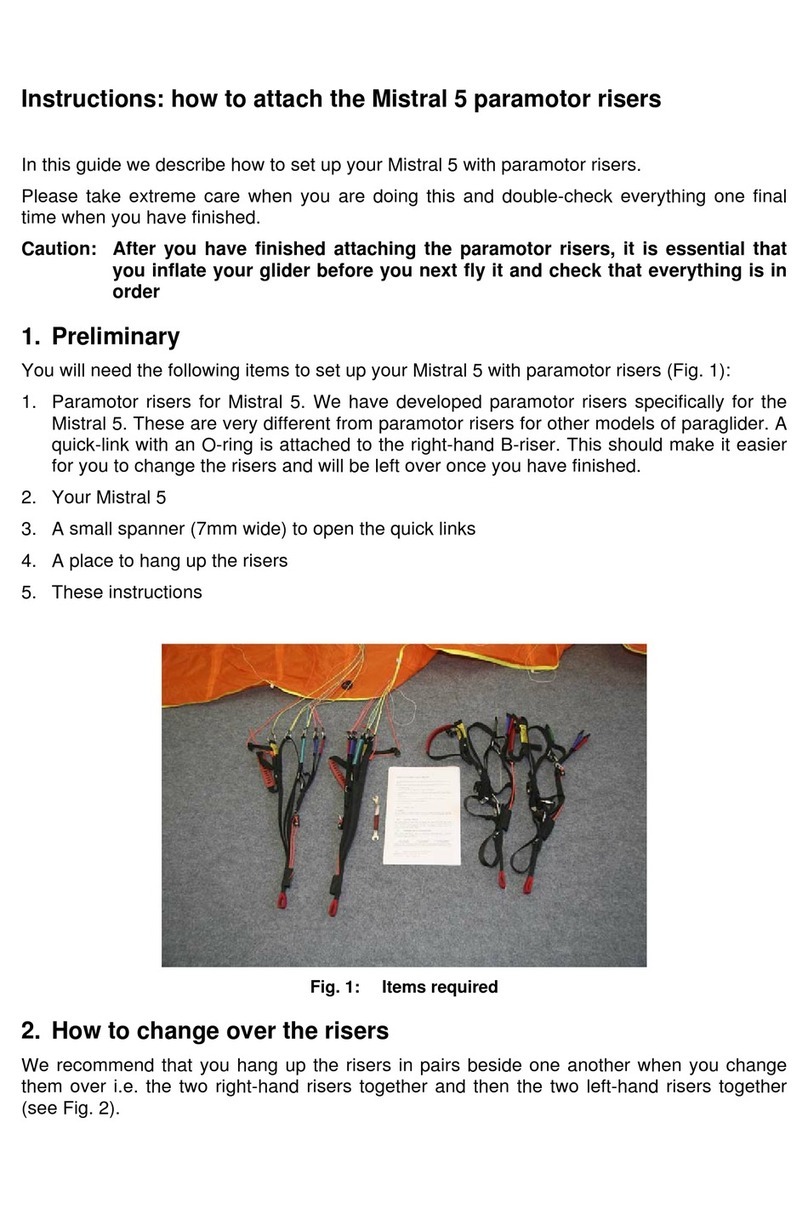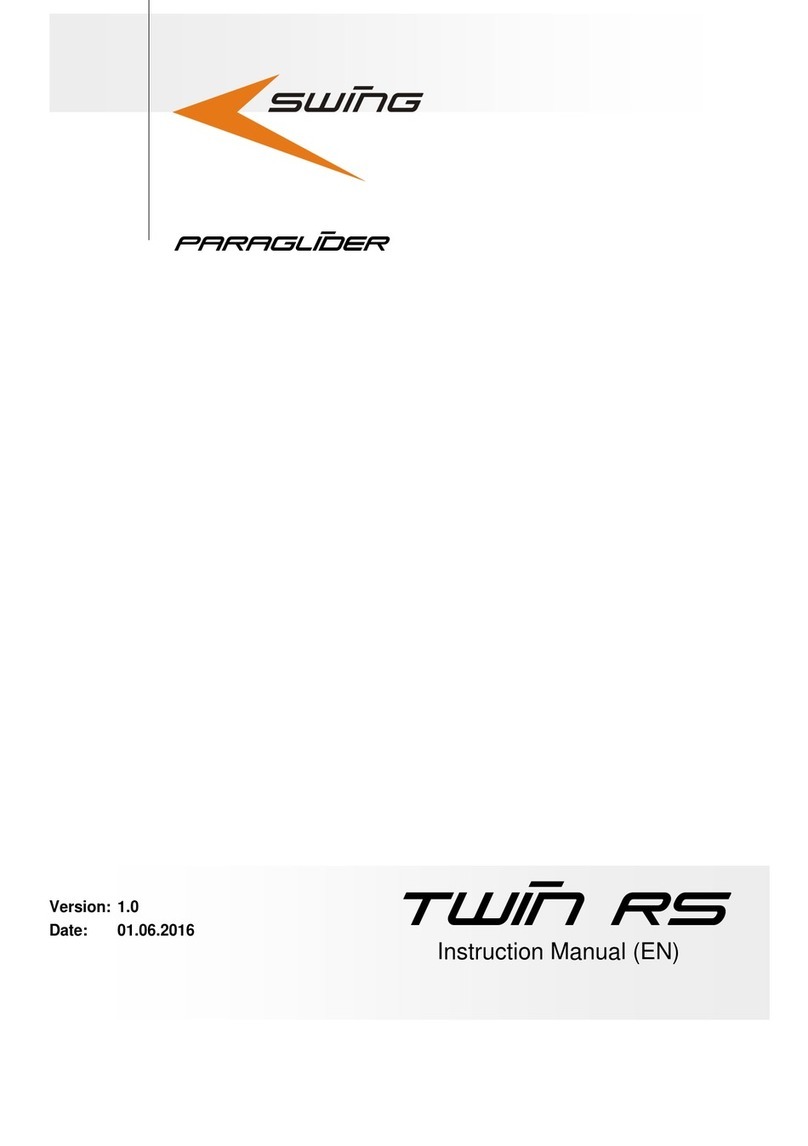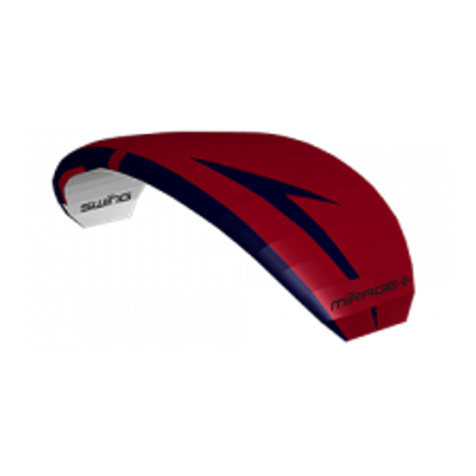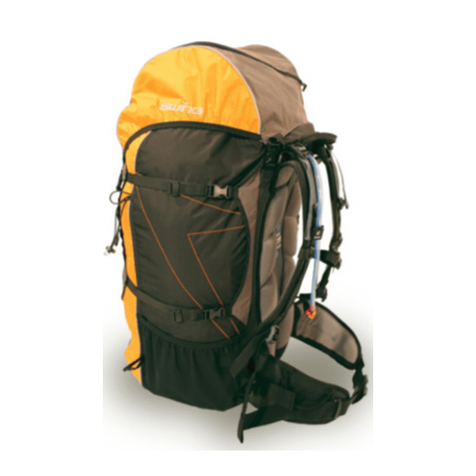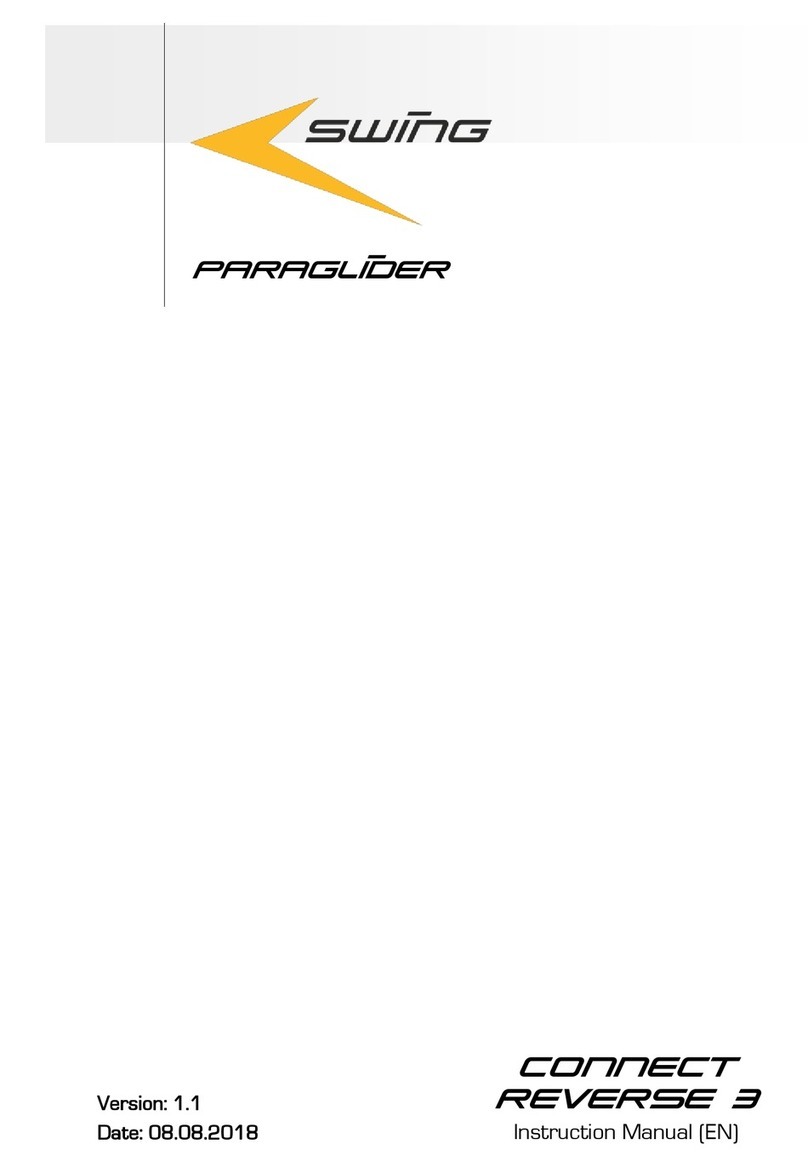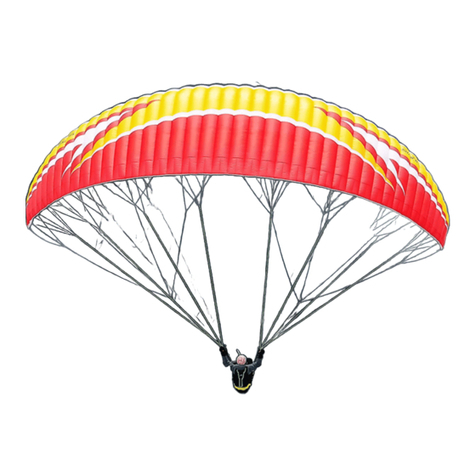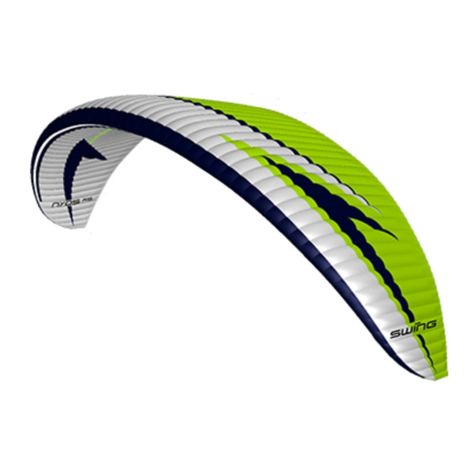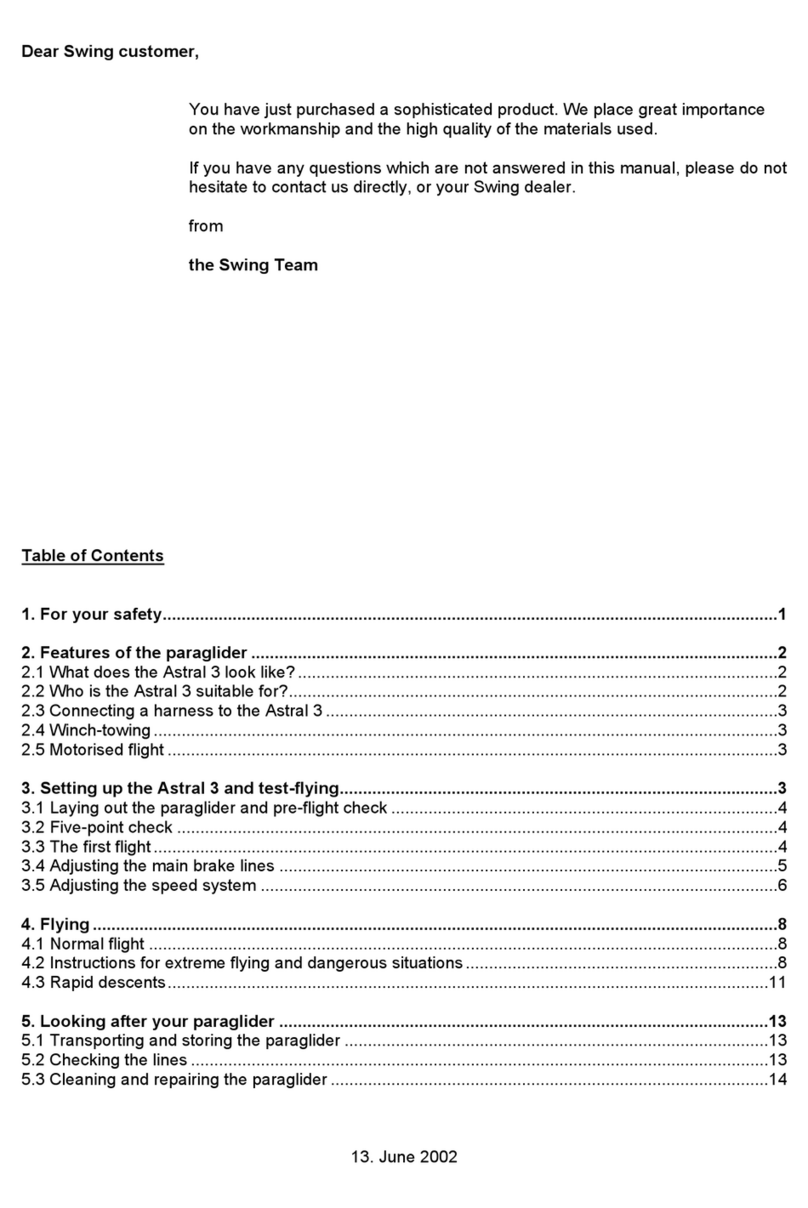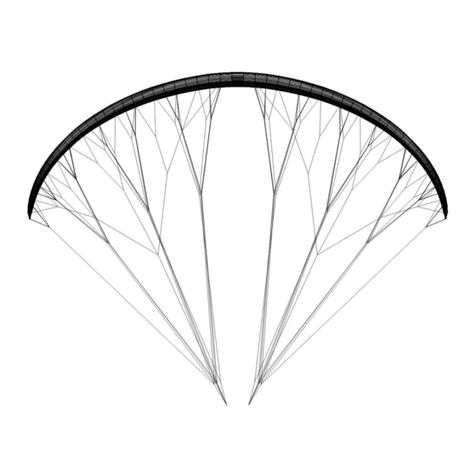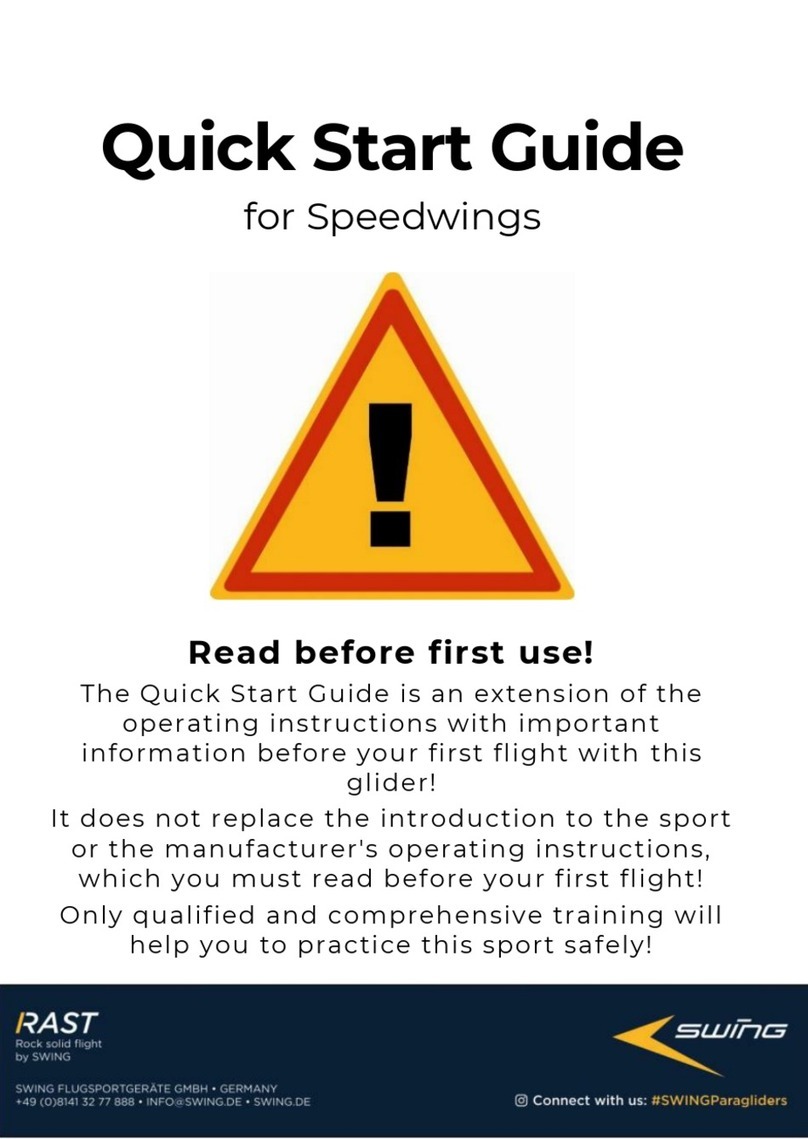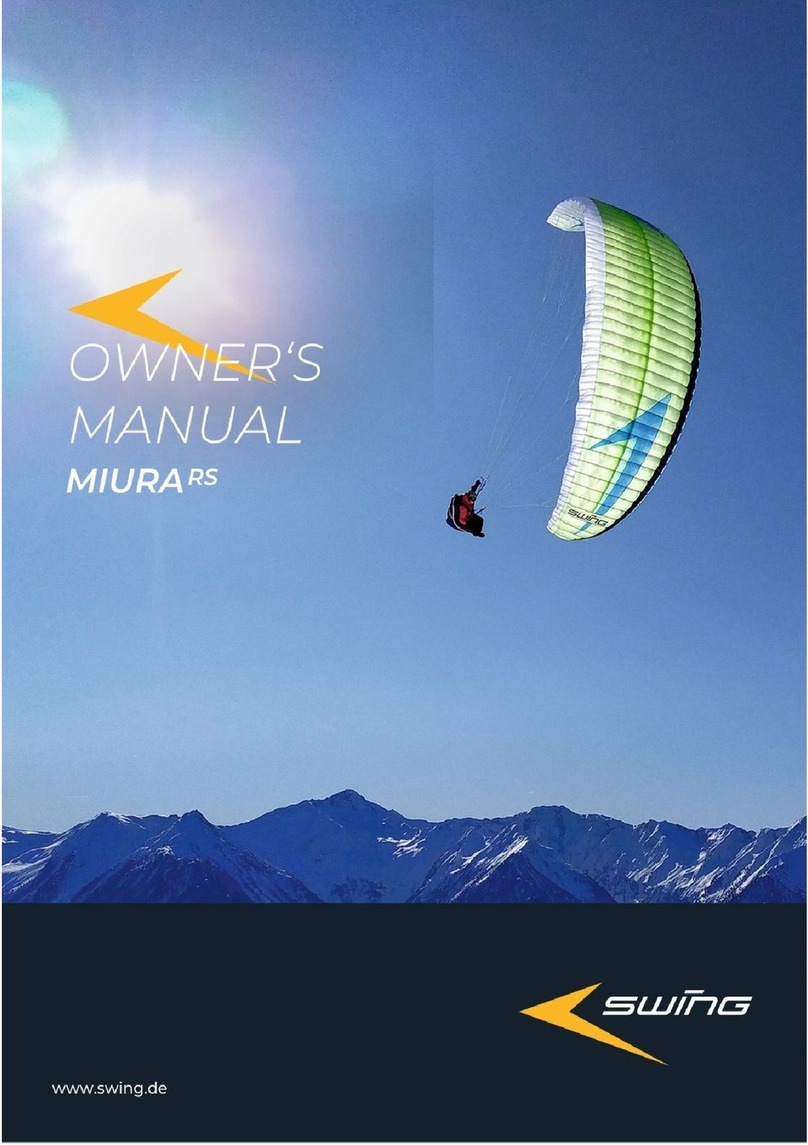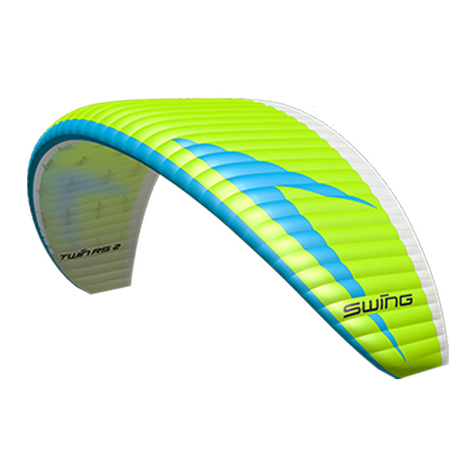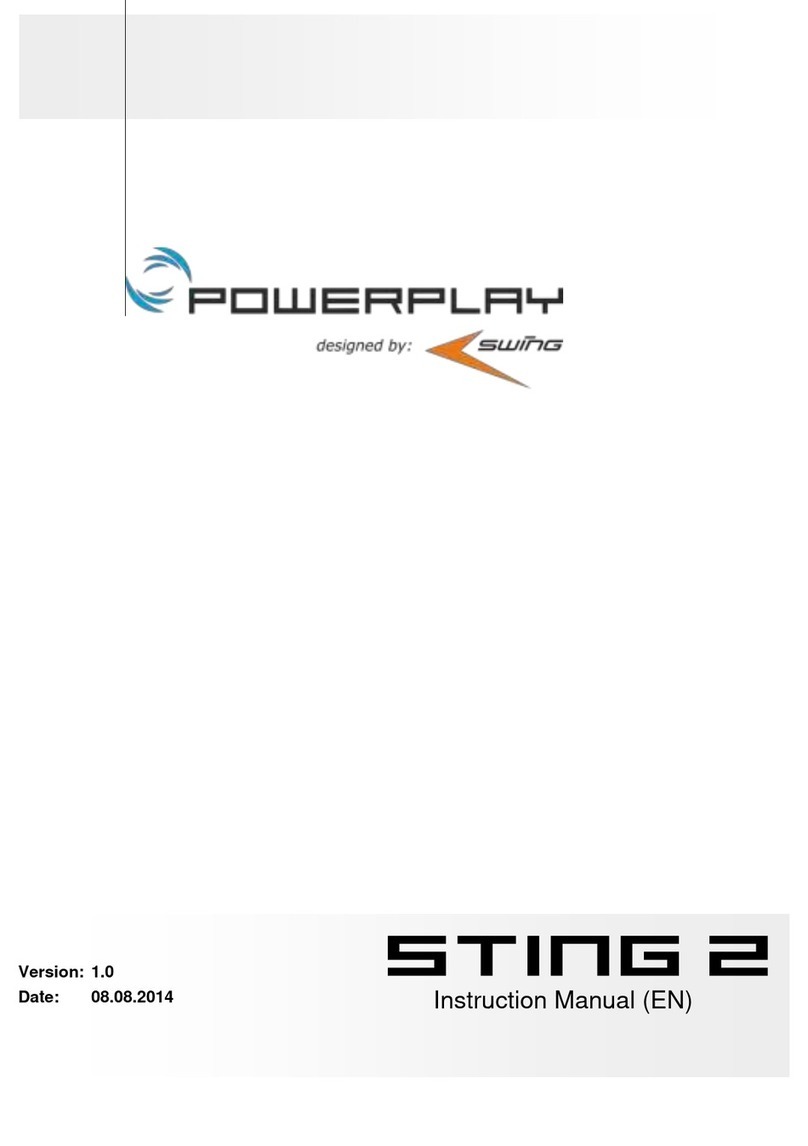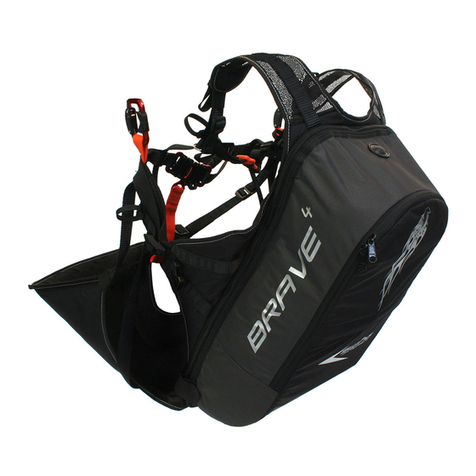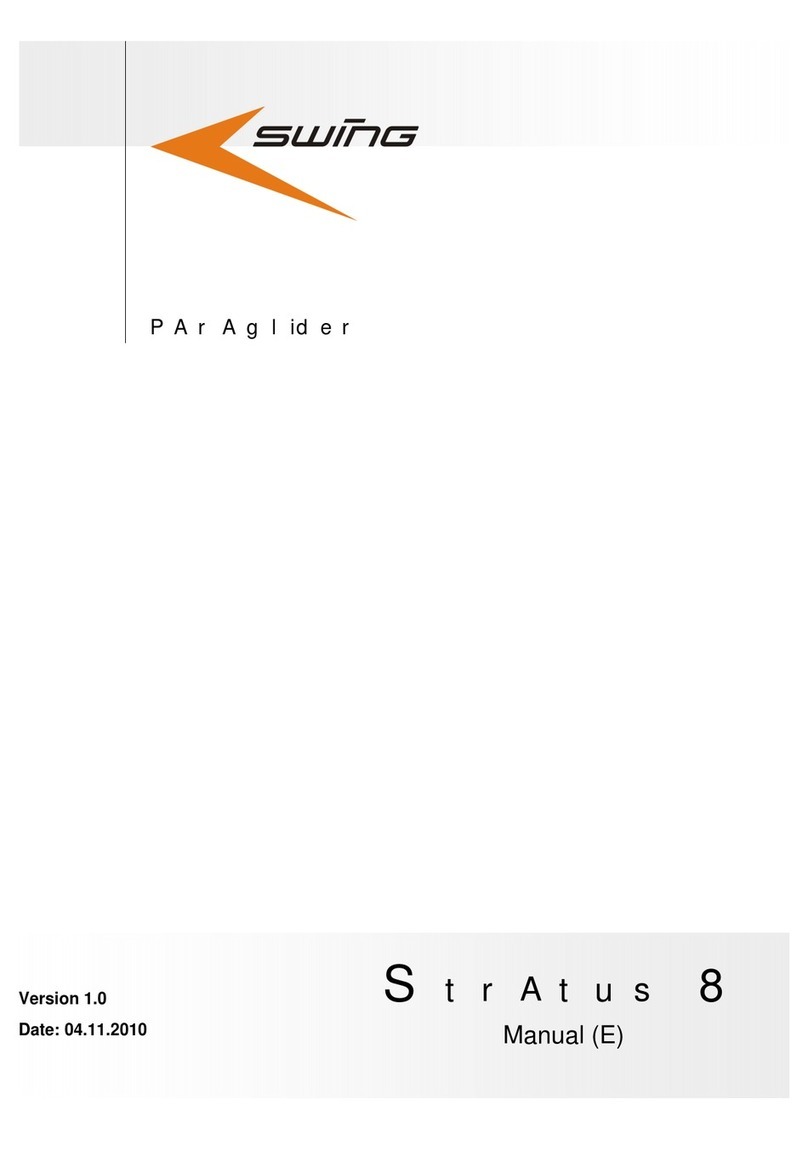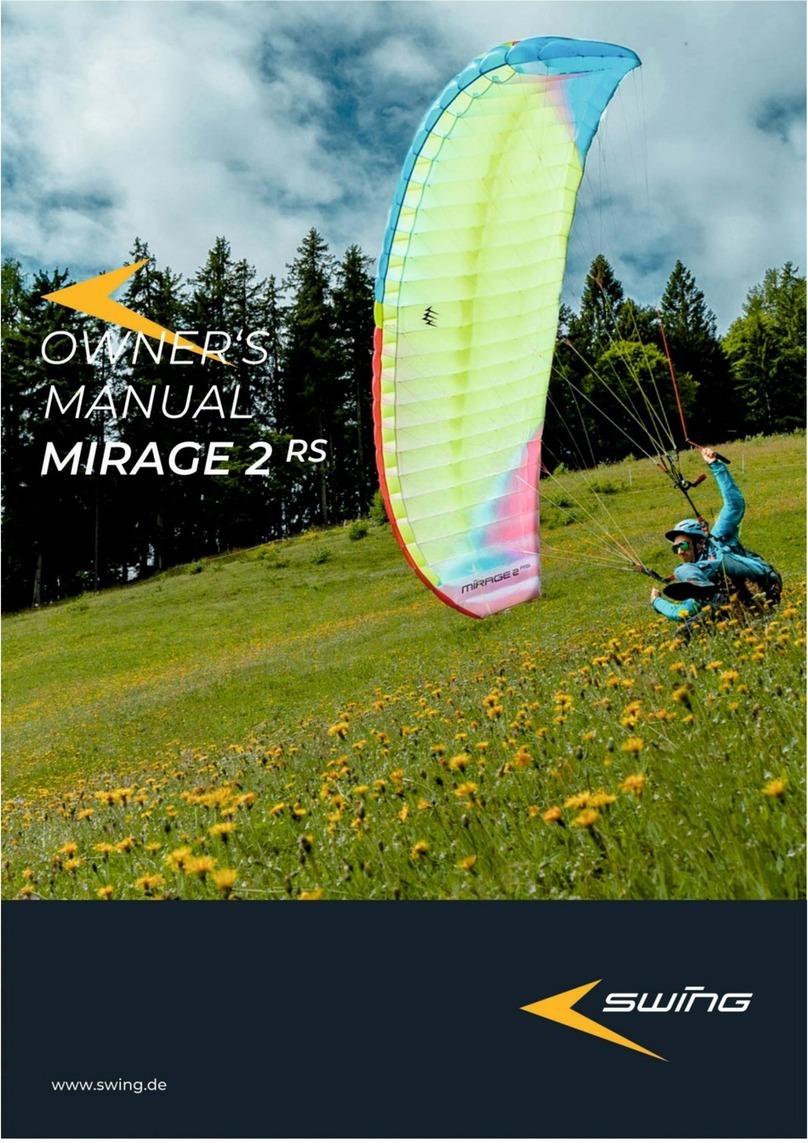1
Version 09/15/2000
Table of contents
Introduction........................................................2
Pre - flight Checks ............................................3
Suitable Harnesses ............................................3
Risers ................................................................4
Speedsystem ......................................................4
Arranging the canopy ......................................5
Take off ..............................................................5
Flight..................................................................5
1.Flying Characteristics ..................................6
Zero Position ..............................................6
Best glide....................................................6
Minimal descent ........................................6
Turning ......................................................6
Flying in turbulence ................................6-7
Accelerated Flight ......................................7
Parachutal stall ..........................................7
2. Rapid descent techniques............................8
Big ears ......................................................8
B-Stall ........................................................8
Spirals ........................................................8
3. Extrem flight manoeuvres ..........................9
Full Stall ....................................................9
Negativ turns (Flat spins) ........................10
Front tuck ................................................10
Front Stall ................................................10
Landing ............................................................11
Folding away....................................................11
Transport ..........................................................11
Storage ............................................................11
Servicing ..........................................................12
Gurantee and checking ....................................12
Checking Data ................................................12
Repairs ............................................................12
Cleaning ..........................................................13
Motorised flying ..............................................13
Compatibility with other harnesses ................13
Artistic display flying ......................................13
Winch starts ....................................................13
Contact ............................................................14
08681-45 329
www.ars-werbung.de
Layout & Illustration
Tony W. Richter
©2000
Cirrus2

